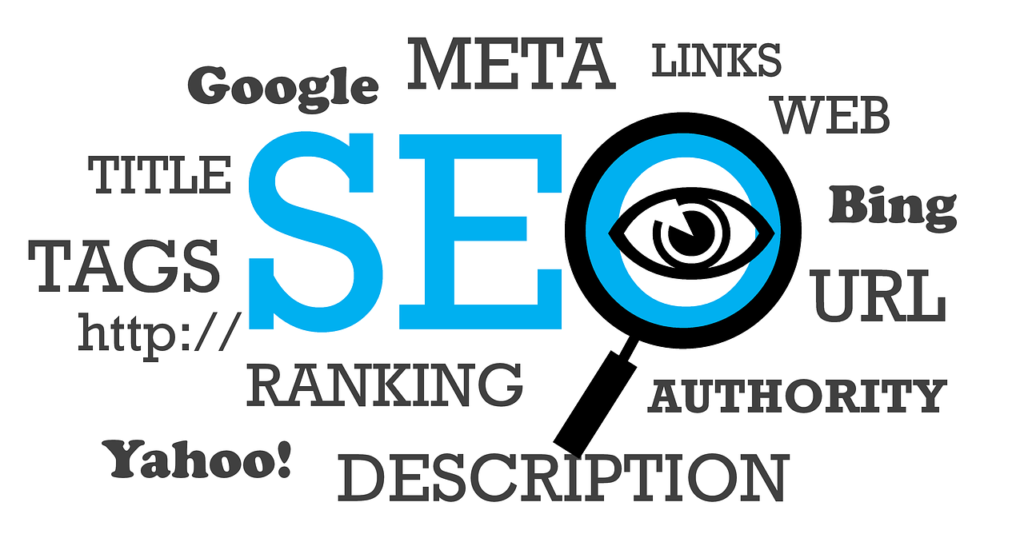Building high-quality backlinks is crucial for improving your website’s visibility and ranking on search engines. But how exactly do you go about it? In this article, we will explore effective strategies and techniques that will help you build valuable backlinks that not only drive traffic to your site but also boost your website’s credibility and authority. Whether you’re a beginner or an experienced website owner, these tips will provide you with actionable steps to build high-quality backlinks and elevate your website’s online presence.
Create high-quality content
When it comes to building high-quality backlinks, one of the first steps you should take is to create valuable and unique content. Your content should provide information, insights, or solutions that are not readily available elsewhere. By offering something original and valuable, you increase the likelihood of other websites linking to your content.
Write unique and valuable content
To build high-quality backlinks, it’s crucial to write content that stands out from the crowd. Focus on topics that are relevant to your audience and provide them with information they can’t easily find elsewhere. By offering unique perspectives, insights, and solutions, you establish yourself as an authority in your field and attract links from reputable websites.
Include relevant keywords
In addition to creating unique content, it’s essential to incorporate relevant keywords into your articles. Keywords help search engines understand the content of your pages and connect them to relevant search queries. By strategically placing keywords throughout your content, you improve the visibility and discoverability of your articles, making it easier for other websites to find and link to your valuable content.
Use engaging visuals and multimedia
While written content is crucial, don’t underestimate the power of visuals and multimedia in capturing and retaining your audience’s attention. Including images, videos, infographics, and interactive elements can make your content more engaging and shareable. When other websites find your content visually appealing and informative, they are more likely to link to it, boosting your backlink profile.
Ensure proper formatting and readability
To create high-quality content that attracts backlinks, pay attention to the formatting and readability of your articles. Break your content down into sections or bullet points, use headers and subheaders, and incorporate white space to improve readability. Additionally, consider using bold and italicized text to highlight key points. By presenting your content in a well-organized and visually appealing format, you make it easier for other websites to reference and link to your content.
Guest blogging
Guest blogging is an effective strategy for building high-quality backlinks and gaining exposure to a wider audience. By writing articles for reputable websites in your industry, you can showcase your expertise, connect with new readers, and earn valuable backlinks.
Research and identify reputable websites
The first step in guest blogging is to research and identify reputable websites that accept guest posts. Look for websites that are relevant to your niche and have a strong online presence. Consider factors such as domain authority, audience engagement, and the quality of existing content on the site. Guest posting on reputable websites will not only help you build backlinks but also enhance your brand’s credibility and visibility.
Pitch relevant and compelling topic ideas
Once you have identified suitable websites for guest blogging, it’s important to pitch relevant and compelling topic ideas. Your topics should align with the website’s content and audience while offering a unique perspective or valuable insights. Craft personalized and well-researched pitches that clearly outline the benefits of your proposed topics to increase your chances of securing guest blogging opportunities.
Provide high-quality content
When guest blogging, always strive to deliver high-quality content that meets the website’s standards. Follow the website’s guidelines for tone, style, and formatting. Make sure your article provides value to the readers by offering actionable advice, in-depth analysis, or thought-provoking ideas. By consistently delivering valuable content, you not only build backlinks but also establish yourself as a trusted authority in your industry.
Include a backlink to your website
One crucial aspect of guest blogging is including a backlink to your own website within the guest post. This backlink serves as a valuable endorsement from the hosting website and can drive traffic to your site. However, it’s essential to ensure that your backlink is natural, relevant, and adds value to the reader. This will increase the likelihood of the backlink being clicked and improve your website’s visibility in search engines.

Broken link building
Broken link building is a powerful technique for acquiring high-quality backlinks by replacing broken links on other websites with your own relevant content.
Find relevant websites with broken links
The first step in broken link building is finding relevant websites that have broken links. You can use tools like broken link checkers or simply search for resource pages, blogs, or articles that may have outdated or broken links. Focus on websites within your niche or industry to ensure relevance and maximize the impact of your backlinks.
Identify the broken links
Once you have identified potential websites, it’s important to identify the broken links on those sites. Analyze the content and look for any broken links that lead to non-existent pages or error messages. Keep a record of the broken links along with the pages they are found on to reference later when you reach out to website owners.
Create high-quality content to replace the broken link
After identifying broken links, the next step is to create high-quality content that can serve as a replacement for the broken link. Ensure that the content you create is relevant, informative, and adds value to the website. By offering a suitable replacement, you increase the chances of website owners accepting your content and linking to your website.
Reach out to website owners and offer your content as a replacement
Once you have created the replacement content, reach out to the website owners or webmasters of the sites with broken links. Politely explain the broken link you discovered and offer your content as a suitable replacement. Emphasize the value your content provides and how it can benefit their readers. By approaching website owners with a helpful and friendly attitude, you increase the likelihood of them accepting your replacement content and linking back to your website.
Build relationships with influencers and experts
Building relationships with influencers and experts in your industry can open doors for collaboration, content promotion, and earning high-quality backlinks.
Engage with influencers on social media and blog comments
Social media platforms and blog comment sections offer opportunities to engage with influencers and showcase your knowledge and expertise. Follow influencers in your niche on social media and leave insightful comments on their posts. By actively participating in conversations and providing valuable insights, you can attract their attention and potentially build a relationship that leads to backlink opportunities.
Reach out to experts and ask for their opinion or contribution
Another way to build relationships with influencers and experts is by reaching out to them directly. Identify experts in your industry who have a strong online presence and send them a personalized message asking for their opinion or contribution on a particular topic. By engaging experts in meaningful conversations or collaborations, you lay the foundation for future backlink opportunities as they become familiar with your work and expertise.
Collaborate on content creation and promotion
Collaborating with influencers and experts on content creation and promotion can be mutually beneficial and result in valuable backlinks. Consider co-authoring articles, conducting interviews, or hosting webinars together. By leveraging each other’s expertise and networks, you can create valuable content that attracts backlinks and expands your reach to new audiences.
Ask for backlinks in relevant content
As your relationship with influencers and experts strengthens, don’t hesitate to ask for backlinks in relevant content. If they are writing an article or creating a resource that aligns with your expertise or content, kindly request a backlink to your website. Frame your request as a win-win opportunity that benefits both parties, and emphasize the value your website provides to their audience.

Create link-worthy resources
Creating link-worthy resources is an effective way to attract high-quality backlinks and establish your website as a go-to source of valuable information.
Create comprehensive guides and tutorials
Comprehensive guides and tutorials provide in-depth information and step-by-step instructions on a particular topic. By creating detailed and well-researched resources, you offer value to your audience and increase the likelihood of other websites linking to your guides and tutorials as authoritative references.
Compile useful statistics and data
Compiling useful statistics and data relevant to your industry can attract attention and backlinks from websites seeking credible information. Conduct surveys, analyze market trends, or gather relevant data to create insightful reports. When other websites find your data valuable and reliable, they are more likely to link to it as a reputable source.
Develop unique tools or calculators
Creating unique tools or calculators that solve common problems or provide useful functions can generate organic backlinks. Tools or calculators that offer convenience or valuable insights enhance the user experience and are highly shareable. When people find your tools or calculators helpful, they are more inclined to link back to your website, boosting your backlink profile.
Offer case studies and success stories
Case studies and success stories demonstrate real-life examples and tangible results, making them highly valuable resources. Share detailed case studies that showcase your expertise or highlight success stories of your clients or industry partners. Other websites interested in similar topics or experiences may link to your case studies or success stories to support their own content.
Use social media and online communities
Leveraging social media platforms and online communities is an effective strategy to promote your content, engage with your target audience, and attract backlinks.
Promote your content on social media platforms
Share your content on social media platforms to increase its visibility and reach. Craft engaging captions and use relevant hashtags to amplify your message. By sharing valuable content consistently and engaging with your followers, you increase the chances of your content being shared and linked to by others.
Participate in relevant online communities and forums
Joining online communities and forums relevant to your industry offers opportunities to establish yourself as a knowledgeable and helpful resource. Participate in discussions, answer questions, and provide valuable insights. When other community members find your contributions valuable, they are more likely to visit your website and share your content, generating valuable backlinks.
Share your expertise and provide valuable insights
Harness the power of social media by sharing your expertise and providing valuable insights on industry-related topics. Post informative articles, tips, or thought-provoking questions to spark discussions. By consistently sharing valuable content and insights, you position yourself as a trusted authority, making it more likely for others to link to your website.
Include your website link in your social media profiles
To make it easy for others to find your website and potentially link to it, include your website link in your social media profiles. This ensures that anyone who visits your social media profiles can easily navigate to your website and explore your content. Remember to regularly update and optimize your profiles to reflect your current branding and content.
Get listed in industry directories
Getting listed in industry directories is a powerful way to gain exposure, increase your website’s visibility, and obtain high-quality backlinks.
Research and identify reputable industry directories
Start by researching and identifying reputable industry directories that are relevant to your niche or expertise. Look for directories that have high domain authority and a good reputation within your industry. These directories act as trusted sources of information for potential customers and can drive targeted traffic to your website.
Submit your website to relevant categories
Once you have identified suitable industry directories, submit your website to the relevant categories. Ensure you choose the most appropriate category that accurately represents your business or expertise. By submitting your website to relevant categories, you increase the chances of your listing being discovered by potential customers or collaborators.
Ensure your website information is accurate and up-to-date
When submitting your website to industry directories, it’s crucial to provide accurate and up-to-date information about your business. Double-check your website URL, description, contact details, and any other relevant information. Consistency and accuracy in your directory listings enhance your credibility and improve the chances of earning valuable backlinks.
Utilize directory websites that provide dofollow backlinks
While not all industry directories offer dofollow backlinks, it’s beneficial to focus on those that do. Dofollow backlinks pass on the link juice and authority from the directory to your website, positively impacting your search engine rankings. Prioritize directory websites that provide dofollow backlinks to maximize the SEO benefits of your directory listings.
Utilize press releases
Press releases are an effective tool for generating buzz, increasing brand awareness, and earning high-quality backlinks from reputable sources.
Craft newsworthy and relevant press releases
Your press releases should be newsworthy and relevant to your industry or target audience. Focus on announcing new products, services, partnerships, or milestones within your business. Craft well-written and concise press releases that capture attention and entice journalists or industry publications to cover your story.
Distribute press releases through reputable channels
Once you have written your press release, it’s important to distribute it through reputable channels that have a wide reach and credibility. Utilize reputable press release distribution services or consider reaching out directly to industry journalists or bloggers. By ensuring your press release reaches the right audience, you increase the chances of it being picked up and earning valuable backlinks.
Include backlinks to your website in the press releases
When crafting your press releases, include backlinks to relevant pages or resources on your website. These backlinks not only drive traffic to your site but also provide a seamless way for journalists or readers to access more information about your announcement. By including backlinks in your press releases, you enhance their value and increase the likelihood of them being linked to by other websites.
Monitor and measure the impact of press releases
After distributing your press releases, it’s crucial to monitor and measure their impact on your backlink profile and overall brand exposure. Use analytics tools to track the traffic, backlinks, and mentions generated by your press releases. This data will help you assess the effectiveness of your press release strategy and make informed decisions for future campaigns.
Collaborate with other website owners
Collaborating with other website owners in your industry can lead to valuable backlinks, increased brand exposure, and mutual benefits.
Exchange guest posts with other website owners
Similar to guest blogging, exchanging guest posts with other website owners provides an opportunity to reach new audiences and earn backlinks. Identify complementary websites or businesses that share your target audience and propose a guest post exchange. By sharing each other’s content, you not only generate backlinks but also benefit from the exposure to a new audience.
Conduct interviews or features with complementary websites
Conducting interviews or features with complementary websites or businesses can help you generate valuable backlinks and establish your authority. Reach out to website owners or experts in your industry and propose an interview or feature opportunity. By showcasing their expertise and providing valuable content, they are more likely to link back to the interview or feature article on your website.
Offer testimonials or reviews for relevant products or services
Another way to collaborate with other website owners is by offering testimonials or reviews for their products or services. Identify reputable businesses within your industry and reach out to them with your honest feedback. In return, they may include your testimonial or review on their website, often accompanied by a backlink to your website.
Cross-promote content and include backlinks
Collaborating with other website owners also involves cross-promoting each other’s content and including backlinks. Share and promote their articles, resources, or events on your website or social media platforms, and ask them to do the same for your content. By cross-promoting and linking to each other, you can attract new audiences and boost your backlink profile.
Monitor and analyze backlink performance
Once you have implemented various backlink-building strategies, it’s important to continuously monitor and analyze the performance of your backlinks. Regularly assess the quality, relevance, and impact of your backlinks to ensure they are positively contributing to your website’s rankings.
Use backlink analysis tools to track your backlinks
Backlink analysis tools like SEMrush, Moz, or Ahrefs can provide valuable insights into the performance of your backlinks. These tools allow you to monitor the number of backlinks, their quality, and the referring domains. By tracking your backlinks, you can identify any changes or trends in your backlink profile and take appropriate actions.
Monitor the quality and relevance of your backlinks
While the number of backlinks is important, it’s crucial to prioritize quality and relevance. Regularly assess the websites linking to you and ensure they are reputable and relevant to your industry or niche. Focus on acquiring backlinks from authoritative websites with high domain authority and a good reputation. High-quality and relevant backlinks have a greater positive impact on your website’s rankings and visibility.
Identify and disavow toxic or spammy backlinks
In the process of monitoring your backlinks, it’s possible to come across toxic or spammy backlinks that can harm your website’s rankings. Identify any low-quality, irrelevant, or suspicious backlinks and disavow them using the Google Disavow Tool. By disavowing toxic backlinks, you protect your website from potential penalties and maintain a healthy backlink profile.
Analyze the impact of backlinks on your website’s rankings
Finally, analyze the impact of your backlinks on your website’s rankings and organic traffic. Assess changes in keyword rankings, organic search visibility, and traffic trends. By understanding the correlation between your backlinks and your website’s performance, you can refine your backlink-building strategies and focus on acquiring high-quality links that positively impact your website’s rankings.
In conclusion, building high-quality backlinks requires a strategic and comprehensive approach. By creating valuable content, leveraging guest blogging and broken link building, building relationships with influencers and experts, creating link-worthy resources, utilizing social media and industry directories, utilizing press releases, collaborating with other website owners, and monitoring backlink performance, you can establish a strong backlink profile that boosts your website’s visibility, credibility, and rankings. Remember, patience and consistency are key, as building high-quality backlinks takes time and effort. But with the right strategies and a friendly tone, you’ll be well on your way to building a strong online presence and attracting valuable backlinks.
https://www.npgraphx.com/how-do-you-build-high-quality-backlinks/
















